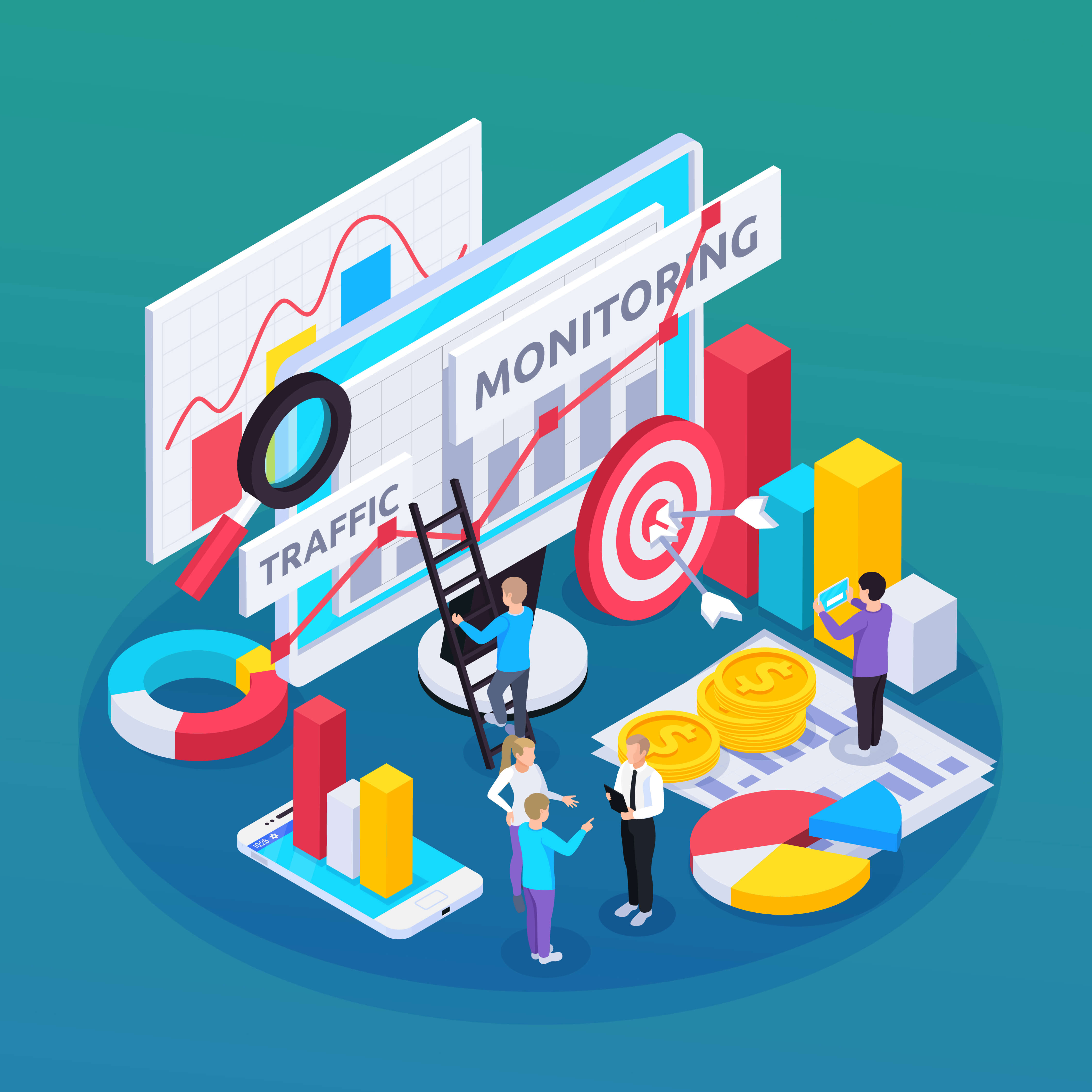Defining Clear MVP Success Metrics and Goals
Author
Saint
Date Published

1. Introduction
In the fast-paced world of software development, launching a Minimum Viable Product (MVP) is a common and effective strategy for testing market fit and iterating on product ideas. However, simply releasing an MVP is not enough. Without well-defined success metrics and goals, product teams risk making uninformed decisions, wasting resources, or misinterpreting user feedback.
This article guides you through the essential practice of defining clear MVP success metrics and goals. By the end, you will understand how to create meaningful, measurable objectives for your MVP that drive product growth and align with your business strategy.
2. Foundations: Setting the Right Goals for Your MVP
2.1 Understanding MVP Goals vs. Full Product Goals
An MVP is not a scaled-down version of your final product—it's a tool for learning. While full product goals often focus on scale, revenue, or market dominance, MVP goals are tightly scoped to validate assumptions, test demand, and understand user behavior.
2.2 Aligning MVP Goals with Product Vision
Clear MVP goals should reflect your broader product vision and business model. For example, if your ultimate goal is to create a community-driven marketplace, your MVP might focus on user sign-ups and engagement rather than revenue.
2.3 Goal-Setting Frameworks
Frameworks like SMART goals (Specific, Measurable, Achievable, Relevant, Time-bound) and OKRs (Objectives and Key Results) help structure MVP goals. The Lean Startup approach also emphasizes "build-measure-learn" cycles that revolve around focused hypotheses.
2.4 Real-World Examples
- A fintech MVP may focus on daily active users and transaction completion rate.
- A B2B SaaS product might prioritize lead conversion from demo requests.
- A health app could measure week-over-week user retention and feature usage.
3. Why MVP Success Metrics and Goals Matter

3.1 Validating Assumptions
Metrics are your compass. They help validate or refute key hypotheses behind your MVP. Without them, you’re navigating in the dark.
3.2 Avoiding Misalignment and Waste
When goals are unclear or misaligned across stakeholders, teams risk building features that don't meet user needs or business priorities. This leads to inefficiencies and slower time to market.
3.3 Connecting to Strategy
Success metrics should directly link to your startup’s strategic goals, such as achieving product-market fit, reducing churn, or optimizing conversion funnels.
4. Types of MVP Success Metrics

4.1 Quantitative Metrics
4.1.1 User Acquisition and Activation
Track sign-ups, app installs, and activation events (e.g., first purchase or onboarding completion).
4.1.2 Retention and Engagement
Use cohort analysis and DAU/MAU ratios to assess whether users return and engage over time.
4.1.3 Conversion and Funnel Metrics
Monitor conversion rates across critical steps in your user journey (e.g., landing page > sign-up > payment).
4.1.4 Monetization
If your MVP includes pricing, track average revenue per user (ARPU), customer lifetime value (CLTV), and churn rate.
4.1.5 Cost Metrics
Measure Customer Acquisition Cost (CAC), development expenses, and cost per conversion.
4.2 Qualitative Metrics
4.2.1 User Feedback
Open-ended feedback from surveys or app store reviews can reveal usability issues and desired features.
4.2.2 Usability and UX
Session recordings and usability tests identify friction points in navigation and design.
4.2.3 Customer Interviews
Interviews help surface user motivations, pain points, and emotional responses that metrics alone can't capture.
4.2.4 Feature Requests
Keep track of recurring feature requests to inform product roadmap decisions.
4.3 Leading vs. Lagging Indicators
- Leading indicators (e.g., engagement, onboarding success) predict future performance.
- Lagging indicators (e.g., churn, revenue) confirm outcomes.
- Use both types to guide short-term iterations and long-term planning.
5. Advanced Metric Selection Strategies

5.1 Avoiding Vanity Metrics
Metrics like page views or downloads can be misleading if they don’t correlate with meaningful product engagement. Prioritize metrics that lead to decisions.
5.2 Stage-Based Prioritization
Choose metrics based on your MVP stage:
- Validation: Engagement, user interviews, feedback quantity
- Iteration: Retention, feature usage, bug reports
- Scaling: Revenue, CAC, CLTV, operational metrics
5.3 Industry Customization
Each industry has unique KPIs:
- Healthcare: Compliance rates, patient outcomes
- Fintech: Transaction volume, fraud rate
- Edtech: Lesson completion, knowledge retention
5.4 Short vs. Long-Term Balance
Short-term metrics help validate ideas quickly. Long-term metrics (e.g., NPS, LTV) ensure the product is viable and scalable.
To explore more about optimizing MVPs for faster results, check out our in-depth guide to advanced MVP strategies.
6. Making Metrics Actionable in MVP Development

6.1 Planning for Analytics
Integrate measurement tools during MVP design. Choose what to measure before launch, not after.
6.2 Recommended Tools
- Google Analytics: Basic user behavior
- Mixpanel: Funnel analysis and event tracking
- Amplitude: Cohort tracking and retention analysis
6.3 Data Collection Processes
Establish clear ownership of metrics within your team. Ensure event tagging is consistent and scalable.
6.4 Feedback Loops
Make decisions based on what users are doing and saying. Prioritize iterations with the highest potential impact.
6.5 Turning Insights into Product Decisions
Translate insights into backlog items. For example, if users abandon onboarding, consider redesigning or adding tooltips.
7. Case Studies: Real-World Examples
7.1 B2C SaaS
A mobile budgeting app tracked 7-day retention and onboarding success. A 35% drop-off during setup led to a simplified sign-up process, boosting retention by 18%.
7.2 B2B Enterprise MVP
An enterprise task management tool measured conversion from pilot to paid license. Success came from tracking admin adoption and support ticket frequency.
7.3 Regulated Industry MVP
A telehealth startup monitored session completion and HIPAA compliance error rates to satisfy both usability and legal requirements.
7.4 Lessons Learned
- Always segment your users
- Pair qualitative with quantitative data
- Iterate quickly on key blockers
8. Communicating Success to Stakeholders

8.1 Tailored Reporting
Founders want business outcomes; engineers need technical data; marketers focus on funnel metrics. Customize dashboards accordingly.
8.2 Data Storytelling
Don’t just show charts—explain what they mean. Use visuals to walk stakeholders through user journeys and decision points.
8.3 Driving Buy-In
Use your data to justify pivots, additional funding, or feature prioritization. Let stakeholders see that every decision is rooted in evidence.
9. Common Pitfalls and How to Avoid Them
9.1 Vanity Metrics
Don’t mistake high traffic for validation if bounce rates are also high.
9.2 Ignoring Qualitative Signals
Users may silently churn without leaving bad reviews. Proactively ask for feedback.
9.3 Unrealistic Goals
Set goals based on current capacity and stage—not aspirations for the future product.
9.4 Static Metrics
Your KPIs should evolve with your product. Revisit them after each major iteration.
10. Conclusion
Clear MVP metrics and goals are more than a project checklist—they’re a decision-making framework. They bring structure to the chaotic process of early product development and help you learn faster, iterate smarter, and build better.
Key Takeaways:
- Align MVP goals with product vision and business model
- Use both qualitative and quantitative metrics
- Customize measurement strategies by product stage and industry
- Continuously refine your metrics as you learn and grow
Ready to implement your own MVP? Explore how our team can help you bring it to life on our MVP development services page.
11. Additional Resources
- SMART goals and OKR templates for MVP teams
- Analytics implementation checklist
- Interview scripts for user feedback sessions
For deeper insights and real-world frameworks, don't miss our advanced guide on MVP strategies.

Learn what a Minimum Viable Product (MVP) is and how it can accelerate your startup's success with our comprehensive founder's guide

Learn how to create a successful MVP mobile app, including key steps, benefits, and real-world examples to guide your development process.

Advanced MVP Development Strategies: expert frameworks for MVP planning, metrics, risk mitigation, Agile execution, and scaling.

Discover strategic approaches to MVP planning with this comprehensive framework, aligning business goals and user needs.

Discover best practices for risk assessment and mitigation frameworks in MVP development to ensure successful, efficient product validation.

Learn how to balance innovation and feasibility in MVP design using proven frameworks, strategies, and real-world examples.